|
By: Camryn Fujita A Factory Smokestack in New Jersey Source: UN Photographer John Isaac One of the most diverse and talked-about strategies to combat the effects of climate change is utilizing an affordable and realistic method to capture and store carbon emissions until we can shift our industries and livelihoods to rely on a more sustainable source of energy than fossil fuels. Carbon sequestration is the natural and deliberate process of securing carbon dioxide in a stable form (solid or dissolved) to prevent it from entering the atmosphere and contributing to warming and the greenhouse gas effect. The principal greenhouse gases that trap heat in the atmosphere include water vapor, nitrous oxide, methane, and fluorinated gases. However, it is carbon dioxide from burning fossil fuels for transportation, that consistently makes up the largest percentage of greenhouse gas emissions. In 2019, the U.S. Energy Information Administration estimated that about 63% of electricity generation came from fossil fuels (i.e. coal, natural gas, petroleum, and others). Furthermore, the United States has one of the highest carbon emissions per capita and is therefore consistently responsible for the second highest total carbon emissions in the world, after China. Before industrialization, carbon “sinks” in the natural world: forests, oceans, and soil, sequestered and released atmospheric levels of carbon dioxide at a level rate. Many may be surprised to learn that today, oceans actually sequester about 25% of carbon dioxide emitted by humans due to biological processes of aquatic animals and plants. Increasing carbon emissions, however, are placing a strain on this natural carbon sink. Studies suggest that colder and more nutrient rich areas of the world’s oceans act as greater carbon sinks, therefore water near the poles and waters that host lots of plant and animal life may be absorbing a disproportionate amount of carbon, thereby altering the acidity of the water and disrupting fragile ecosystems. Another lesser known carbon sink is the Earth’s soil. Natural processes of photosynthesis and decomposition regulate the carbon absorption and release in soil. Soil carbon levels indicate the amount of organic matter in soil, encouraging greater carbon fixation and therefore encouraging plant growth. Finally, the most commonly known carbon sink is our planet’s forests. Trees are often cited as one of the best and cheapest ways to mitigate humanity’s carbon footprint, especially in urban areas. The natural process of photosynthesis means that plants capture and utilize atmospheric carbon dioxide to create glucose (sugars) necessary for growth. The value of Earth’s forests in storing carbon is well documented. Today, 25% of global carbon emissions are captured by forests, grasslands and rangelands. Carbon dioxide is released back into the atmosphere and soil when vegetation dies and decomposes. Maintaining and protecting forests is important because irresponsible deforestation and frequent forest fires can transform the carbon sink into a carbon source. Advances in technology have allowed scientists to develop man made methods of sequestering carbon. Geological carbon sequestration is the strategy of capturing and liquidizing carbon emissions from industrial facilities, and then injecting it into permeable geologic formations deep underground, and then covering the sequestered carbon with impermeable rock to be stored for a long period of time. Other strategies being explored include developing direct air capture (DAC) technology, engineering molecules capable of capturing carbon from the air, and technology that sequesters carbon and combines it with hydrogen gas at extremely high temperatures to create graphene production. The big question is, can carbon sequestration, alone, reverse the course of climate change and temper the unchecked growth of human emissions? The answer is no. The U.S. Climate Change Science Program (CCSP) estimated that emissions over the next century may have to be reduced by 75% in order to maintain emissions levels at an environmentally healthy level. The conclusion they drew is that “carbon sequestration is necessary but insufficient to control atmospheric CO2.” Keeping carbon emissions at a reasonable level will require a complete overhaul in the world’s energy infrastructure, drastic shifts to the type of fuels on which our society relies, and intense carbon management. Nonetheless, scientists have continued to explore avenues for maximizing Earth’s natural carbon sinks. For example, over the years, scientists have found that soil has been losing significant amounts of its carbon stock due to overgrazing and overfarming. When soil is exposed to the air it oxidizes and burns the soil carbon into carbon dioxide. Without soil organic carbon, soil becomes dirt: useless in agriculture and susceptible to erosion. Accelerating the carbonate forming process by adding silicates to the soil enhances the ability of soil organic matter to store carbon for several decades and of carbonates to store carbon for more than 70,000 years. Conscious carbon farming practices include greater emphasis on composting, using “conservation tillage” methods, and diverse crop rotations, and more to ensure that soil remains carbon-rich.
There has been some debate over and experimentation with various afforestation and reforestation strategies to maximize the carbon sink that is our Earth’s forests. Many scientists believe that the preservation of existing forests is an essential tool in addressing climate change. However, some wonder how effective and realistic massive afforestation, or planting trees to create a forest where there was previously no tree cover, could be. In 2019, “The global tree restoration potential” by Swiss scientist Jean-Francois Bastin suggests that the Earth’s ecosystems could support an additional 900 million hectares of continuous forest and argues for “global tree restoration as one of the most effective carbon drawdown solutions to date.” Some scientists believe that resources would be better used if they were on maintaining and protecting existing forests and introducing limits to carbon emissions instead, raising an interesting schism in the conversation about carbon sequestration and climate change mitigation. Some scientists caution that planting billions of acres of trees sounds like a great idea in theory, but an implementation of such a project requires much more careful planning and thought than may seem necessary on surface level. Some questions these scientists believe should be considered are: “How long will this approach take to make a dent in atmospheric carbon concentrations? Can grasslands and savanna ecosystems sustain increased tree cover? How might converting non-forest land to forests compete with food production? How much time, money and resources will it take to implement a global forest restoration of this magnitude? How do the costs of adopting such a climate mitigation strategy stack up against its potential benefits?” Others only see the usefulness in massive afforestation, if the problem of rapid deforestation is addressed first. The caution advised for massive afforestation projects shows that large tree-planting projects require strategic planning, and must have long-term support in order to be successful. The scientific debate over where resources are best put to use in the fight against climate change also highlights the urgency of the crisis and the importance of including a wide range of climate scientists and ecologists in policy decision-making. Learning about carbon sequestration strategies and relevant debates in the scientific realm allows the public to understand that unfortunately, as much as we would like it to be an easy fix, addressing climate change seriously will take much more than planting a bunch of trees.
5 Comments
By Camryn Fujita A Heatwave in Queens, New York. Source: Chris Goldberg Picture yourself walking around a city on a hot summer day. Your vision is blurred by sweat dripping down into your eyelashes. Mirages make solid ground look like a shimmery pool of water. You can definitely feel the heat of the pavement searing through your shoes and frying your tender feet. Finally, it comes to the point where you are desperately looking for an air-conditioned corner store or source of shade and are now regretting whatever influenced you to step outside in the first place. For many people, this whole experience might amount to a mere inconvenience and irritation. However, for those who do not have immediate access to shelter and must spend long periods of time outside for essential activities such as work or school, excessive heat could easily create a very dangerous situation. In dense urban areas that suffer from a lack of trees, an urban heat island could form. This phenomenon is caused by a lack of trees and an abundance of asphalt and concrete in a dense city. These surfaces absorb and trap heat from the sun, cars, machines, and factories, raising “ambient temperatures” up to “10°F warmer than the surrounding natural land cover.” Urban heat islands can greatly impact people and natural environments within cities by causing heat related injuries and deaths during heat waves, increasing energy consumption, decreasing in air quality, and warming urban ecosystems and bodies of water, which can disturb wildlife. Heat related illness, such as heat strokes, heat cramps, and heat exhaustion, is the leading cause of death from natural weather or environmental events. Populations such as the elderly, infants, people with pre-existing health conditions, people living in poverty, and non-U.S. citizens in America are the demographics most vulnerable to dying from heat related illness. Extreme changes in daily temperature has also been known to increase the amount of heart attacks according to research presented to the American College of Cardiology. In July of last year, a massive heat wave killed at least 6 people in the United States, triggered declarations of weather-related emergency, and forced sporting events such as Major League Baseball and the NYC Triathlon to either cancel or change schedules. Outside of the U.S., the 2019 European Heatwave was responsible for the deaths of over 30,000 people and 13 billion Euros in damage. The heatwave was the hottest recorded temperature in Europe since the 16th century. Overall, scientists have tracked statistically significant, rapid warming over the contiguous U.S. land surface over the past several decades. Experts say that 50 years ago, extreme heat waves were a rarity. However, that seems to be changing. Research has shown that the bell-shaped curve of observed temperatures has already shifted by one standard deviation interval warmer, meaning extreme heat occurrences now make up about 7% of observed temperatures. Periods of extreme heat are outpacing periods of extreme cold at a rate that could become 50 to 1 by the end of the 21st century. The consequences of urban heat islands are important to recognize because it is a tangible example of how human activity contributes to global climate change and can negatively impact our daily lives. Although climate change and urban heat islands are two distinct phenomena, they have the potential to create a positive feedback loop and intensify, which could accelerate the pace of global climate change patterns mentioned previously. For example, when “summertime heat islands contribute to global warming by increasing demand for air conditioning, which results in additional power plant emissions of heat-trapping greenhouse gases.” In fact, research shows that warmer air temperature “is responsible for 5-10% of urban peak electric demand for air conditioner use, and as much as 20% of population-weighted smog concentrations in urban areas.” Even though warmer winters and nighttime temperatures may allow for conserving energy on heating, trends suggest that warmer summer periods cause increases in net energy use. Thus there is a serious risk of straining our nation’s energy supply and infrastructure resilience if extreme heat waves continue, not to mention the financial costs of this burden. Observed and projected changes in near-surface air temperature for Hawai‘i. Observed data comes from 1905–2014. Projected changes for 2006–2100 predict two possible futures: one where greenhouse gas emissions continue to increase (higher emissions) and another where greenhouse gas emissions increase at a slower rate (lower emissions). Source: CICS-NC and NOAA NCEI What can we do to address urban heat islands? Besides offering shade to filter direct sunlight, trees provide a natural cooling effect from photosynthesis. The transpiration of water from leaves into the atmosphere cools the surrounding air. Therefore the U.S. Environmental Protection Agency and other experts recommend planting more trees and vegetation on roofs as an effective solution. Trees also address the concerns around air pollution in urban centers. Trees are some of the most efficient vehicles of carbon sequestration. Furthermore, tree planting strategies such as planting certain species that are fast-growing, planting a variety of species, and turning trees that are cut down into lumber instead of allowing it to decompose can maximize carbon-capture and storage.
Potential solutions also lie in developing proactive building practices and in passing legislation as well. Minimizing the use of black asphalt and painting dark surfaces white or installing cool roofs and pavement reflect the sun’s heat instead of storing it. According to the Yale School of Forestry and Environmental Studies, “fresh asphalt reflects only 4% of sunlight compared to as much as 25% for natural grassland and up to 90% for a white surface such as fresh snow” and lighter colored surfaces can lower extreme temperatures by 2-3°C. New construction codes that maintain variability in building height allow for increased airflow down streets. Mixing land use for residential, commercial, and recreational use and intentionally designing walkable neighborhoods allows more space for trees. Responsible development and consciousness in urban planning can yield results that minimize the damaging effects of the urban heat islands on our most vulnerable communities. In 2019, Honolulu’s Office of Climate Change, Sustainability, and Resiliency completed Oahu’s first Community Heat Mapping Campaign. Honolulu was one of 10 cities selected to conduct the study funded by the National Oceanic and Atmospheric Administration’s Climate Program Office. Volunteers aimed for a detailed heat map by fixing sensors that take temperatures and record humidity while driving along predetermined routes throughout the island at various times during the day to measure changes in heat. The final results are available in this interactive map. People living in Hawaii might falsely believe that the urban heat island phenomenon is not a problem here, because we are different from the mainland. We do not have immense urban sprawl such as the size and type you will find in Los Angeles or New York City. However, the final report of the project shows that volunteers detected afternoon temperatures of as high as 107°F, and, as expected, some of the hottest areas of the island are in low lying, urban areas in downtown Honolulu. By: Camryn Fujita The Popular Bryant Park in New York City. |

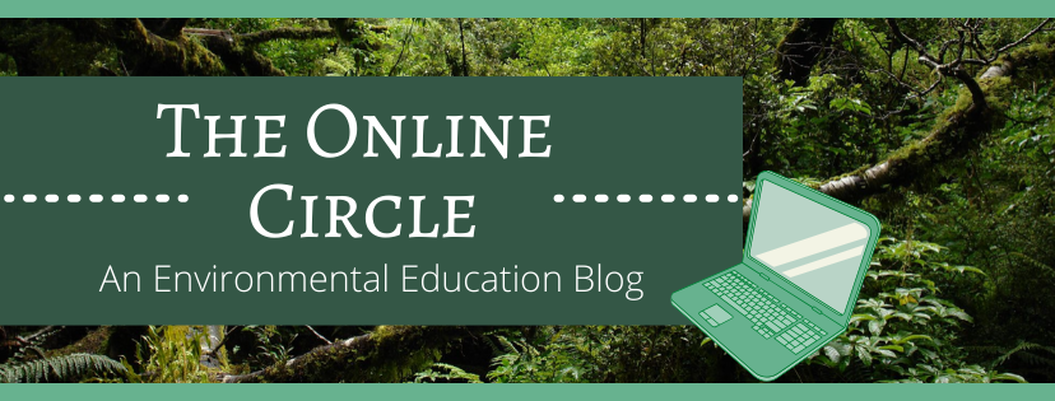
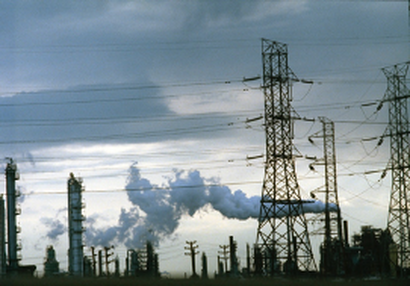
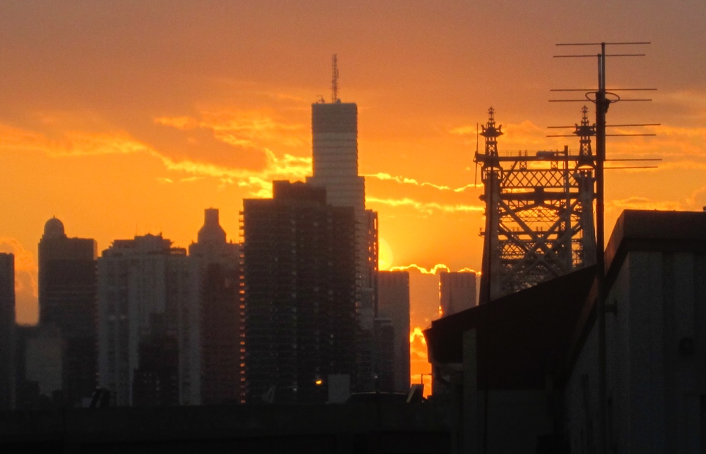
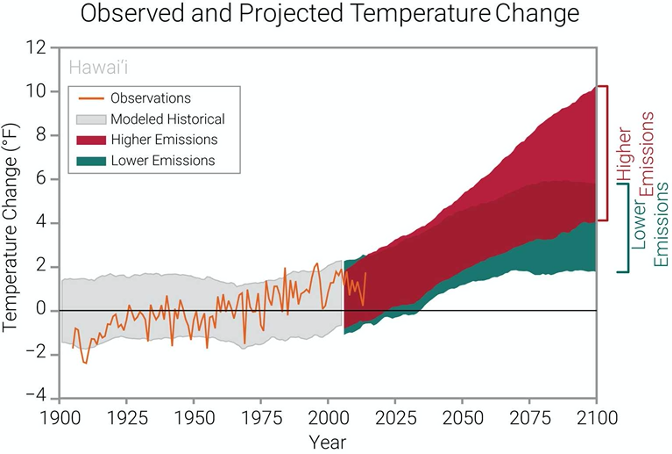
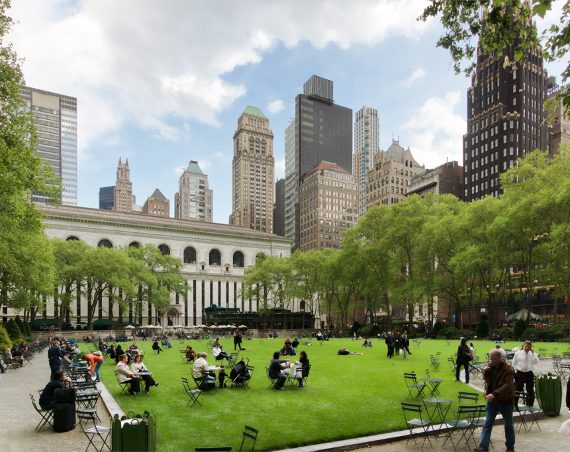
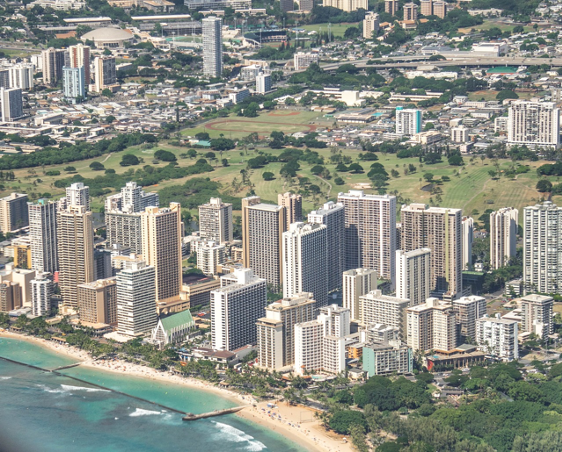
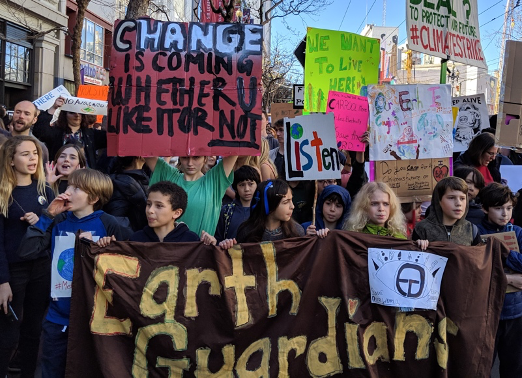
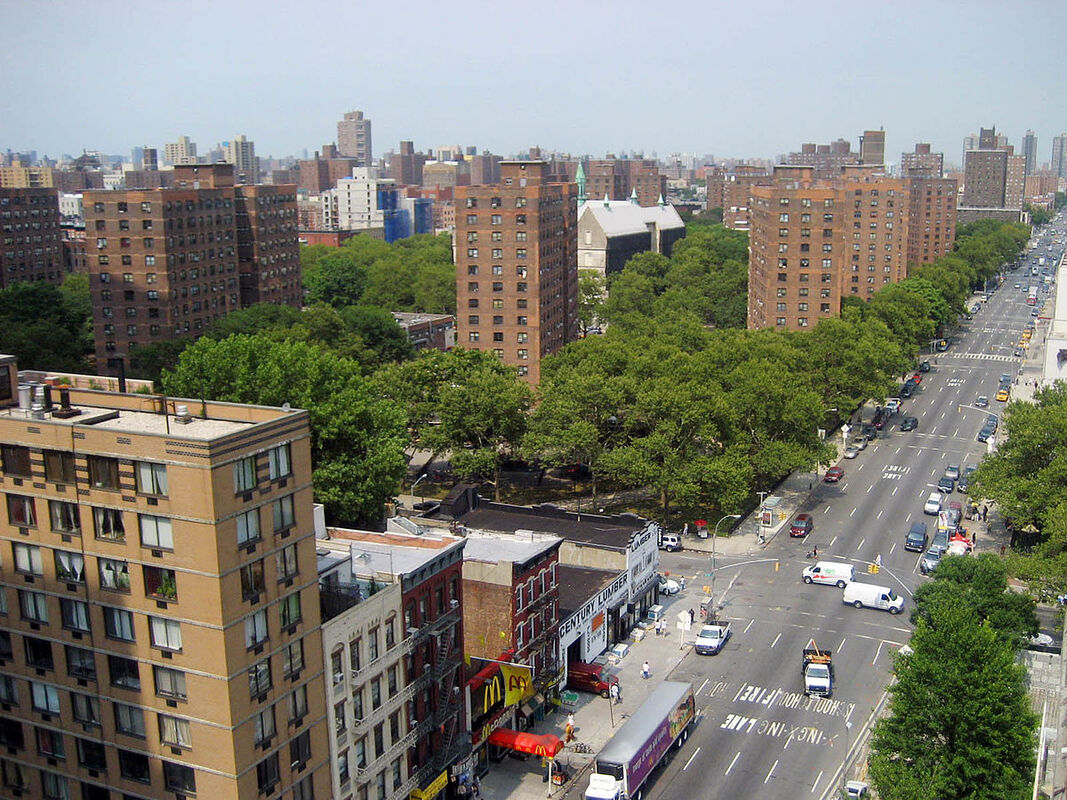
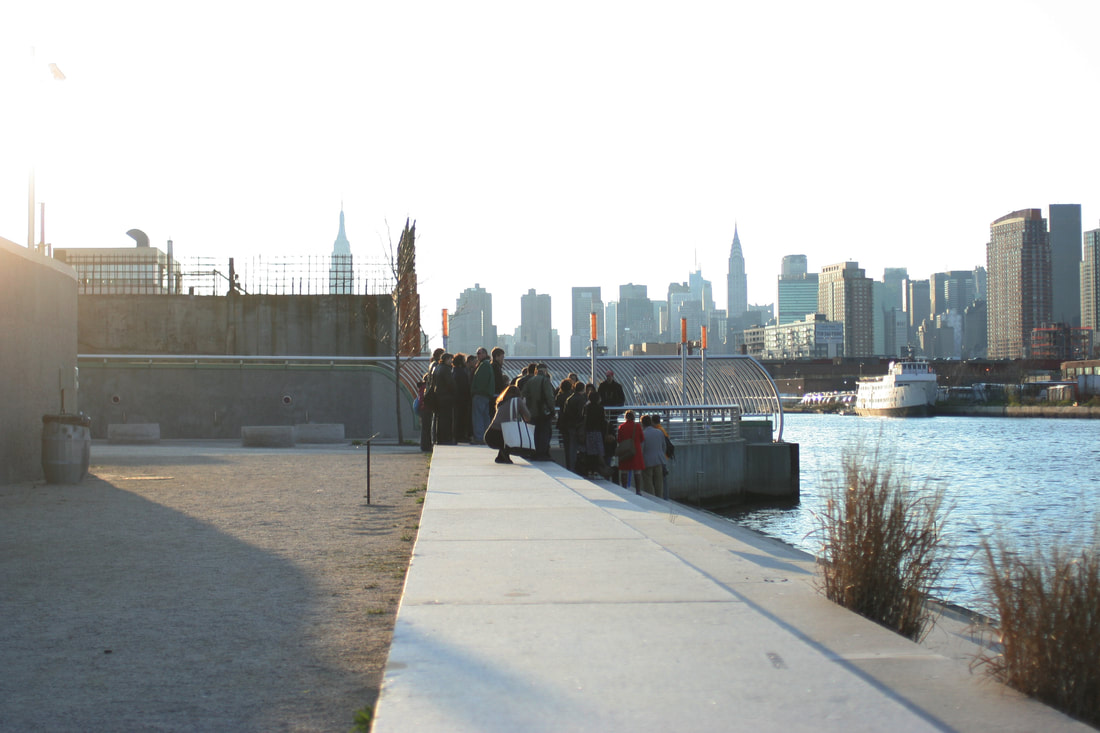
 RSS Feed
RSS Feed